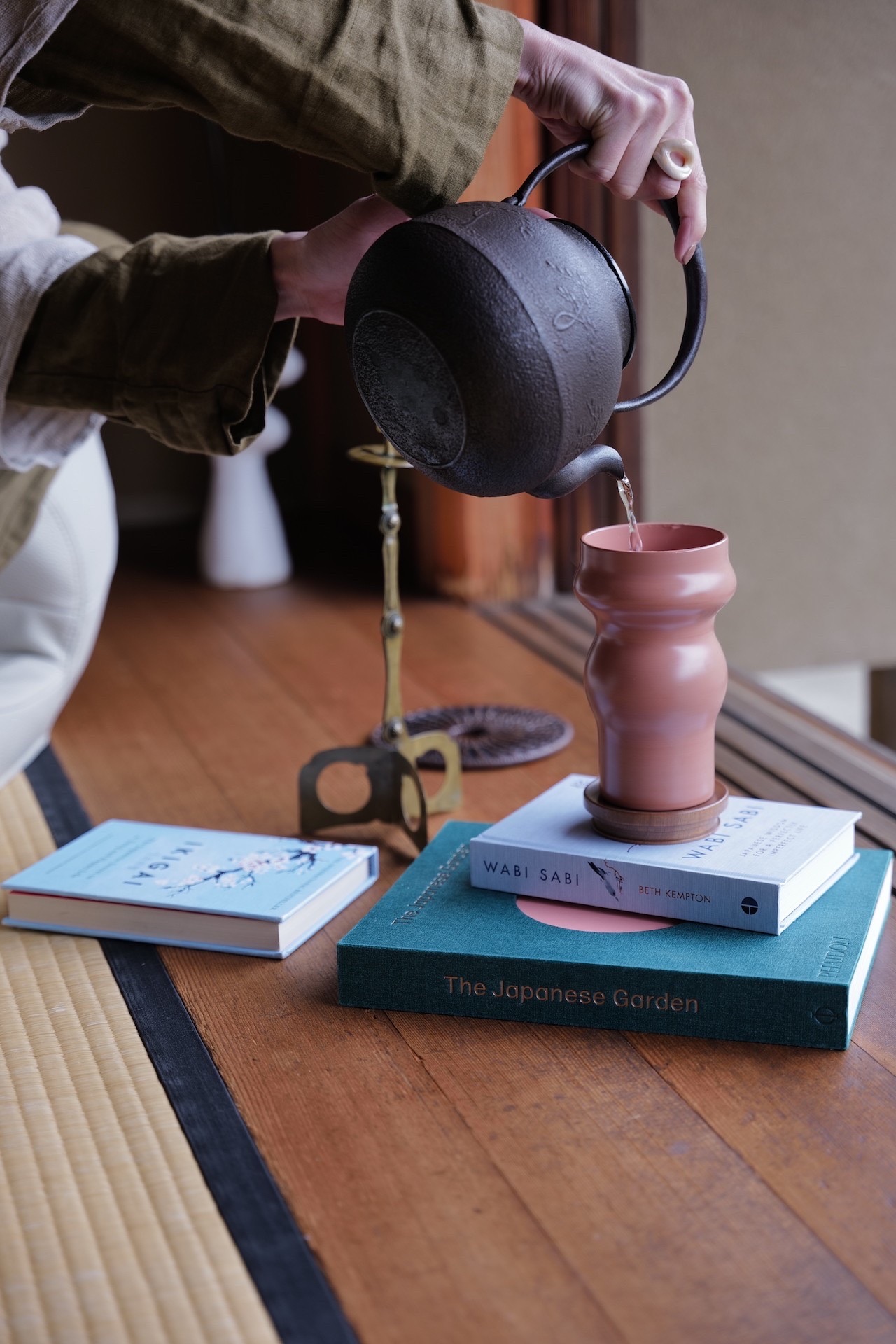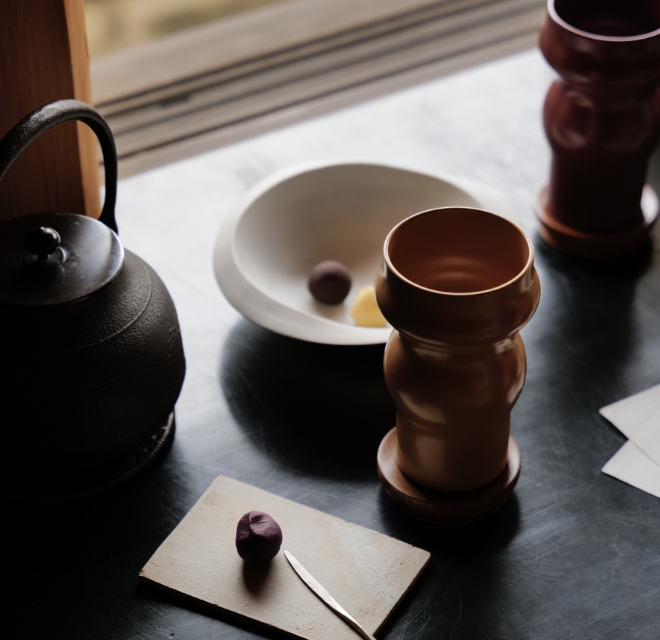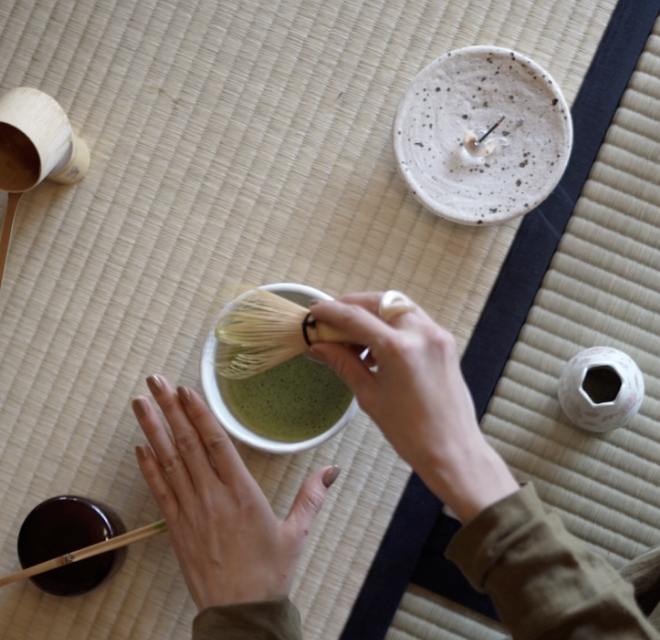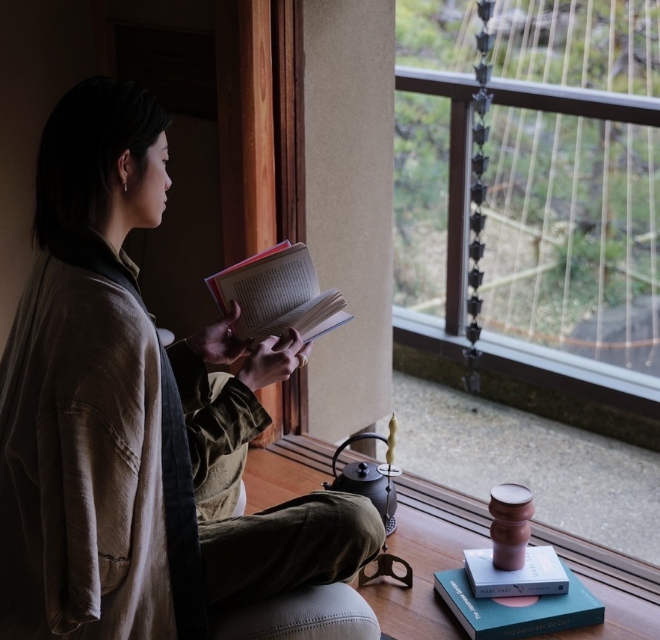Brightening the future of kimono: the lights of Keita Izumiji, the owner of Ginza Motoji
Kimono is Japanese haute couture, that embodies the preciousness and beauty of fine art, despite being a wearable garment. There are many people across the world who endeavour in various ways to maintain the legacy of this craft that Japan has produced, and to ensure that the creators can carry it forward into the future. Ginza Motoji is a store whose ideas lead this charge, a star innovator in the world of kimono. Mr. Izumi, who owns the store, has a plethora of modern ideas that spill over into the worlds of overseas artists and educational institutions while being connected to Living National Treasures*, leading to changes in traditional culture that are expected to open new doors within the practice. We asked for their thoughts on their various industry initiatives.
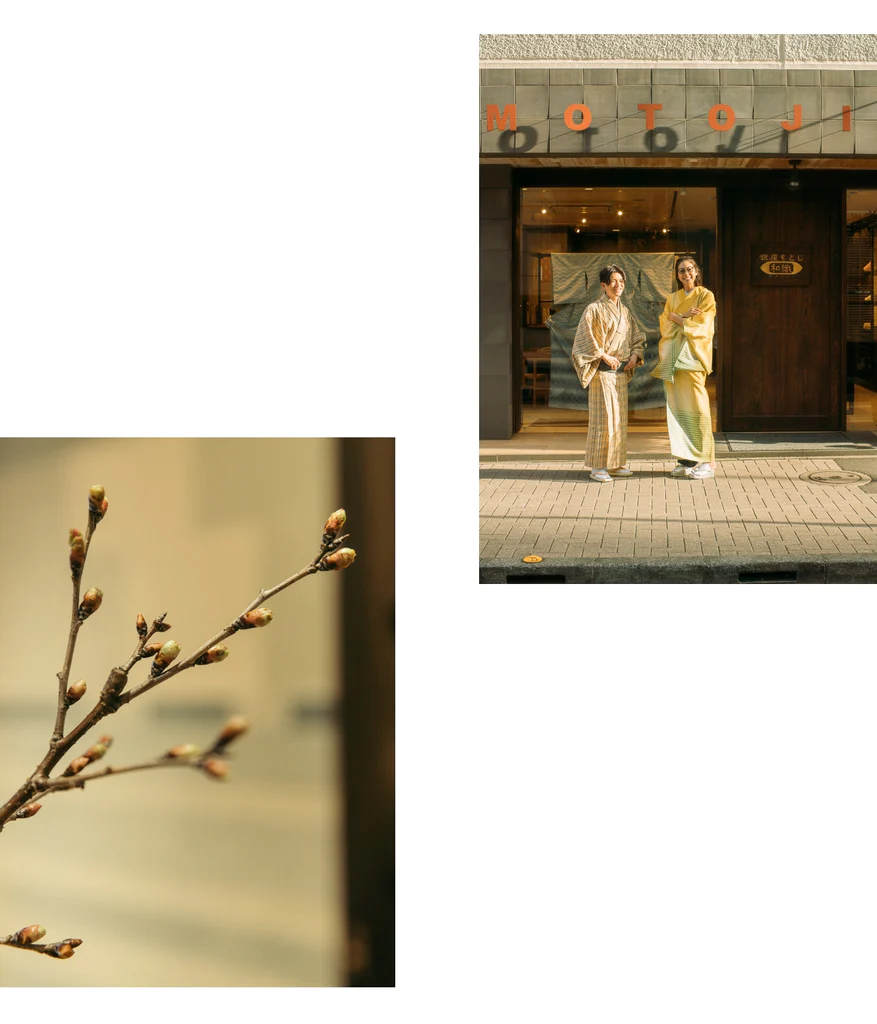
“Platinum Boy” is a purely domestic silk fabric that Ginza Motoji produced exclusively. Can you please elaborate on this?
As you probably already know, silk is made from the cocoons of silkworms, but the silk that’s produced by male silkworms is thin, long, and shiny. This is because their bodies excrete proteins that do not result in breeding. To capitalize on this phenomenon, a national initiative was launched to develop manufacturing technology that breeds exclusively male silkworms from eggs for the production of high-quality domestic silk. After 37 years of research, this silk developed by Dr. Akio Onuma of the Dainippon Silk Association Sericulture Research Institute is named Platinum Boy, and our store produces and commercializes products that utilize that silk. Since we found our success in 2007, we’ve signed contracts with sericulture researchers and farmers, silk reelers and weavers, and continue to work closely with them to support the industry as a whole.
I’ve never heard that there was a technique that only produces male silkworms. Is it possible to develop a new variety in the same way?
At the very beginning of the project, the farmers had a difficult time. These silkworms are more sensitive compared to other breeds, so not only is delicate temperate control required, but the timing at which they enter the “mabushi” (the lattice-like cocoon chamber) phase to excrete raw silk differs by one or two days, so the feeding and preparation schedules are very different. The life cycle of silkworms dictates the quality of the silk. It may be easier to compare this process to winemaking, but in the grapes-growing phase where factors in the natural environment like the climate directly impacts growth and may require fine adjustments accordingly. There was a lot of trial and error involved until the quality we wanted was achieved.
I understand that you support contracted farmers and other creators. What specific initiatives are you taking?
There are plenty, but when the cloth is completed specifically at the store, it is delivered with a certificate stating the name of the farmer who was involved. Normally, it is rare for the name of a person who is not a dyer or weaver to appear in writing. When the sericulture farmer first saw the cloth woven from the cocoons of the silkworms he raised, he was so happy that he was moved to tears. We’ve also heard stories that there are grandchildren who took pride in the name of their grandfather and his craft upon searching his name online.
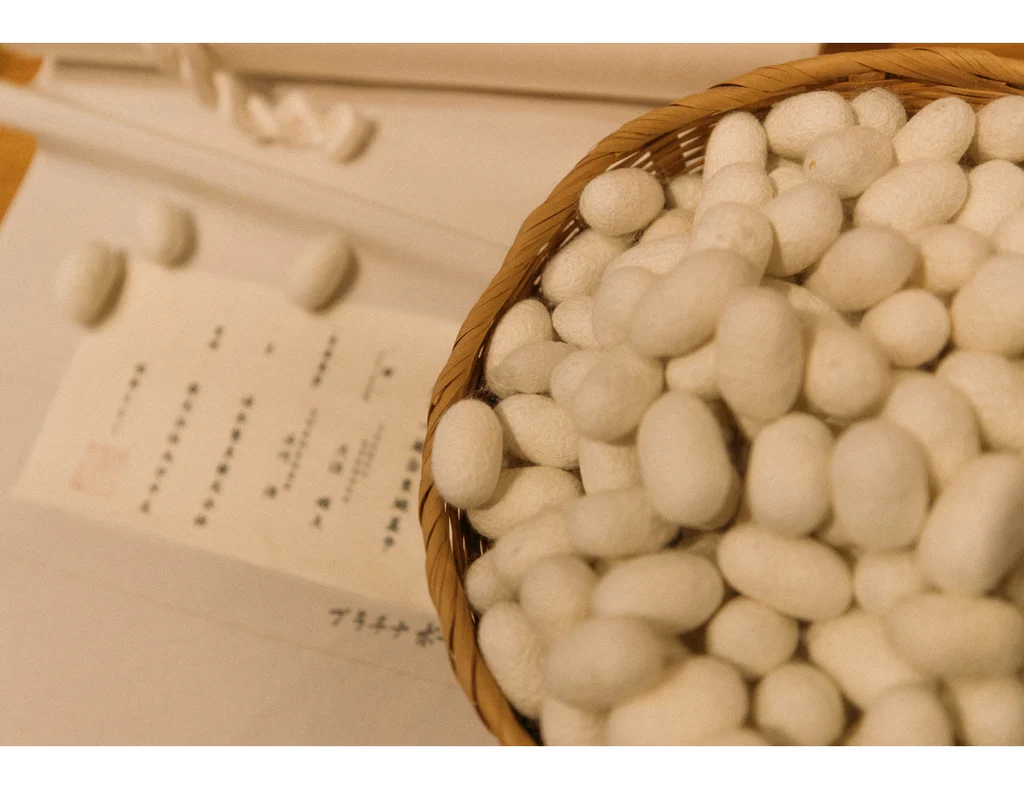
It’s wonderful that traceability could address the problem of lack of successors. However, currently, the self-sufficiency rate of domestic rate is very low…
When the country opened during the Meiji era, there was a palpable shift from Japanese to Western clothes becoming commonplace as everyday Japanese attire. A clothing ordinance was issued that obliged bureaucrats and military personnel to wear Western-style clothing at official occasions. So, when the Meiji era passed into the Taisho and Showa eras, with the repetition of eclectic mixing of Japanese and Western styles, everyday people gradually shifted from kimono to Western clothing. Modernization also dramatically changed the landscape for kimono culture, from the silkworm farmers to the craftsmen. In recent years, the numbers have dwindled down to about 180 kimono houses left. The current rate of self-sufficiency in domestic silk is less than 1%, and 70% of the farmers are in their 70s and 80s. In the present domestic production market, it isn’t possible to reduce the selling prices to that of overseas products, but high quality can be an advantage. I think the role “Platinum Boy” silk has to play to boost the domestic silk industry is significant.
At tefutefu, we’re trying to reaffirm the splendor of Japanese culture and industry to the current generation. I often wonder what is lacking that could better connect Japanese traditions to the future.
The existence of a culture that exists in high end products and their styles, their histories, are not particularly well-known. It is also part of my mission to communicate this concept, and I think I have to take responsibility to create some kind of gateway.
What does it mean to “create a gateway”?
Some time ago, I was contacted by Tensan no Kai in Shirataka, Yamagata Prefecture. Hikari-san, you’ve seen wild silkworms in Azumino, so I think you understand that while the cocoons of wild silkworms are big and expensive, the raw silk output is comparatively small, so the industry is in decline. At Tensan no Kai, we made efforts to keep the culture alive, so we spent two to three years to produce a single roll of fabric from raising the silkworms from eggs to the spinning and weaving of the silk. However, I couldn’t maintain the process as it was so I asked to buy the cocoons. When we bought them, we made singular rolls of silk and sold them as fabric for kimono.
After that, we took the client who purchased the roll to the production site in Shirataka, and they were impressed by the painstaking process and the enthusiasm and pride of the farmers took in the work. We also then held a talk show with the silk producers at the store in Ginza, where the manufacturing process was relayed in detail connecting the wild silkworms to fabric via a single thread. So, although the silkworm industry is on the verge of extinction, bringing the creators and clients closer together has enabled us to discover new ways to convey the value of preserving this culture. I’ve now come to realize a sense of responsibility to ensure that this culture is inherited by the generation after mine. We can’t carry such weight alone, so I think we each have a role to play in conveying and maintaining connecting thoughts of the people we hold in high esteem.
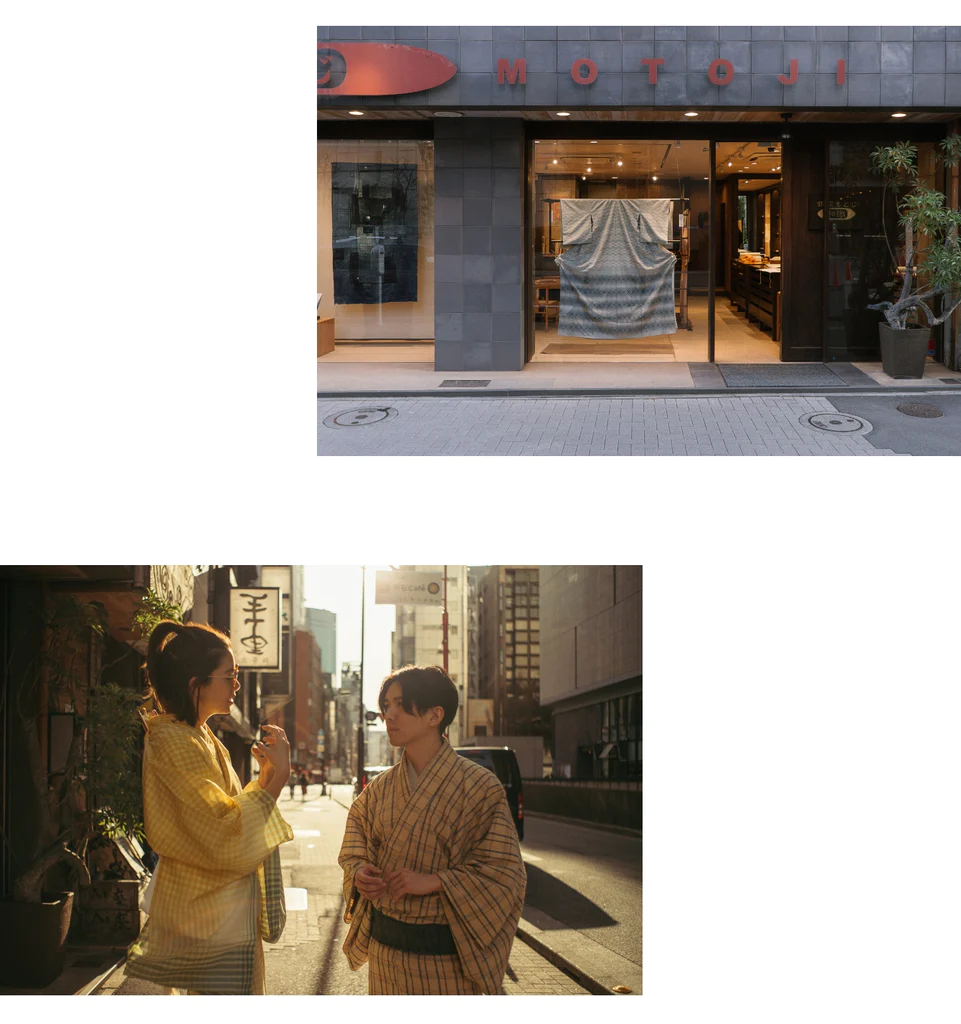
By the way, how would you describe your typical client?
The majority of my client base is in their 40s and 60s, but I think that there’s been an increase in appeal among the younger demographic due to the recent revival of Japanese style. Maybe it’s the prevalence of smartphones, but many young people can now access the cultures of various countries easily and perhaps grow an interest learning more about Japan. With this in mind, I have two goals. The first is to make kimono a more commonplace wardrobe option, and the second is to make working in the kimono industry a dream job. To that end, I want to focus on further disseminating kimono culture to the general public. The store holds irregular kimono workshops for about 30 people in their 20s and 30s who have never worn them before. Young craftsmen discuss the past, present, and future of sericulture and Yuki Tsumugi cloth, which is UNESCO Intangible Cultural Heritage. I was so happy to hear from a student who participated that their parents have Yuki Tsumugi kimono and that they want to take the opportunity to wear it.
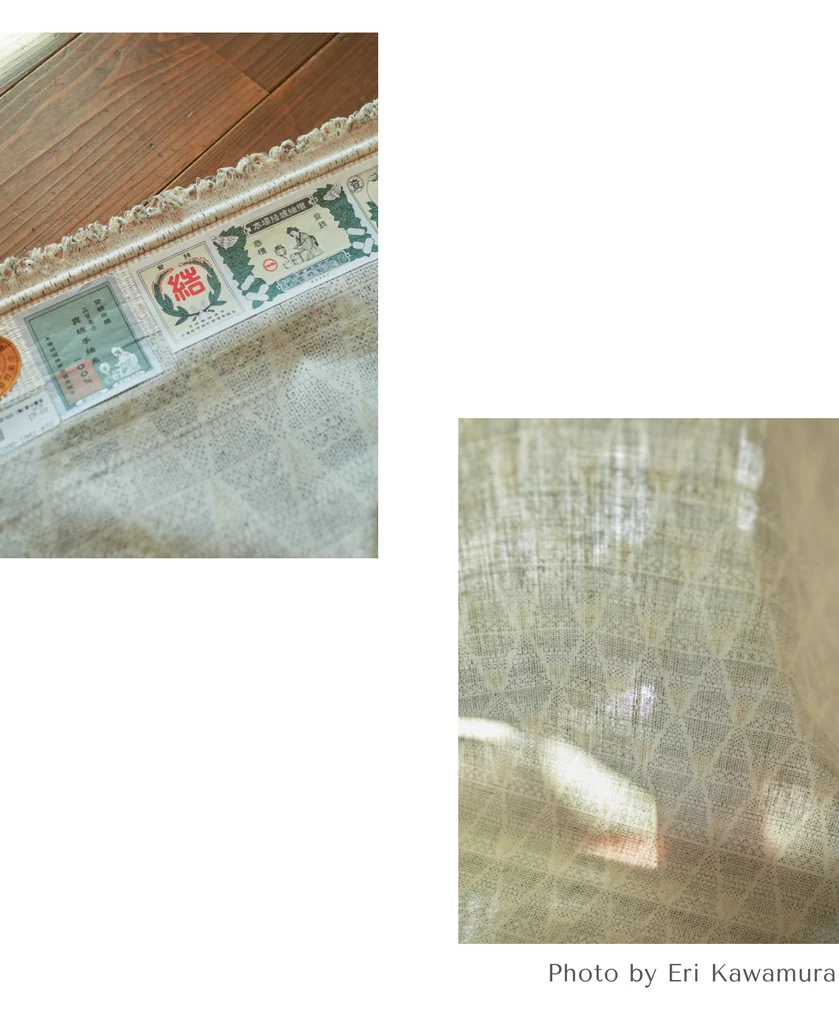
Is the unique texture of Yuki Tsumugi due to the weaving process?
Yuzen dyed kimono is produced by boiling silkworm cocoons while the larvae are still inside and spinning and weaving the raw silk to create a fabric with a clean surface on which the artist will draw the print by hand. Tsumugi woven kimono is more casual no matter how expensive the price because the farmers themselves spin the silk harvested from cocoons that have been hatched or are deformed. The silk floss is twisted by hand into thread, and the threads are dyed before weaving. Even though the mechanization of this process was introduced and became commonly practiced in the Edo and Meiji periods, authentic Yuki Tsumugi is woven using hand-spun threads for both warp and weft in the textile.
What’s the key difference between the handmade and machine-made textiles?
The hand-spun threads that make up the cloth have an organic playfulness in their texture and the more the cloth is worn, the more lustrous it becomes. It may feel stiff at first but softens and molds to the body over time with wear. This beautiful ageing cannot be achieved with the textiles made by machine.
Not only is the passage of time entirely different from normal production, but so is the manual processes and the technicians involved.
It does take a lot of time for craftsmen to create each piece by hand, but there are often cases where the prices do not justify the means. So, we believe that wages will need to increase in the future but it will reflect back on market price, so the client will be left wanting unless the product has outstanding value. The problem has many aspects, but in order to broaden our perspective of it, we need to put together a long-term plan that tackles the issue from different directions.
What are you doing, specifically?
As an example, Taimei Elementary School in Ginza has been teaching willow dyeing classes from the willows in the area for 25 years. These classes teach the history of Ginza and the willow tree’s life cycle as well as the joy of making things, and the mud used for the dyeing of Oshima Tsumugi is from Amami Oshima. In the dyeing class, each student is encouraged to dye two handkerchiefs -one for themselves and one for a loved one- and then have everyone in the grade draw freely on a larger piece of cloth. The purpose is to introduce the joy in the basis of kimono at an early age so as to reiterate the existing culture that has roots in each region.
Supporting high-quality manufacturing in the system To pass on the succession of three generations to society as a whole.
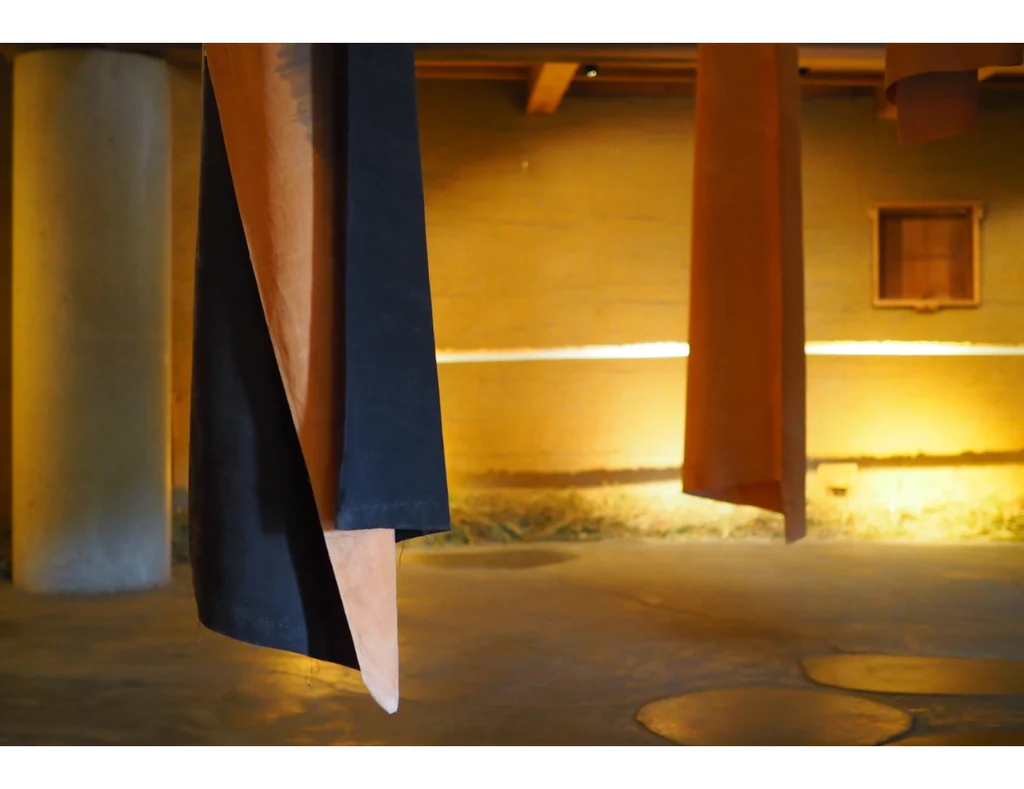
What kimono is Izumiji-san wearing today?
This is Tamba cloth, said to be the textile that Soetsu Yanagi, famous for developing the Mingei* movement, loved most. Tamba-fu actually died out once in the Meiji era, but in the early Showa period, Yanagi found a piece of cloth at a morning market in Kyoto and discovered that it was a Tamba textile that originated in Hyogo Prefecture, and revived its manufacture after the war. In fact, we developed a product that expands on the possibilities of dyeing and weaving with Shinya Yanagi, a weaver whose grandfather is Yoshihiro Yanagi, the nephew of Soetsu Yanagi. We are planning an event in Tokyo from April 14th to 16th.
*Mingei: folk art/craft
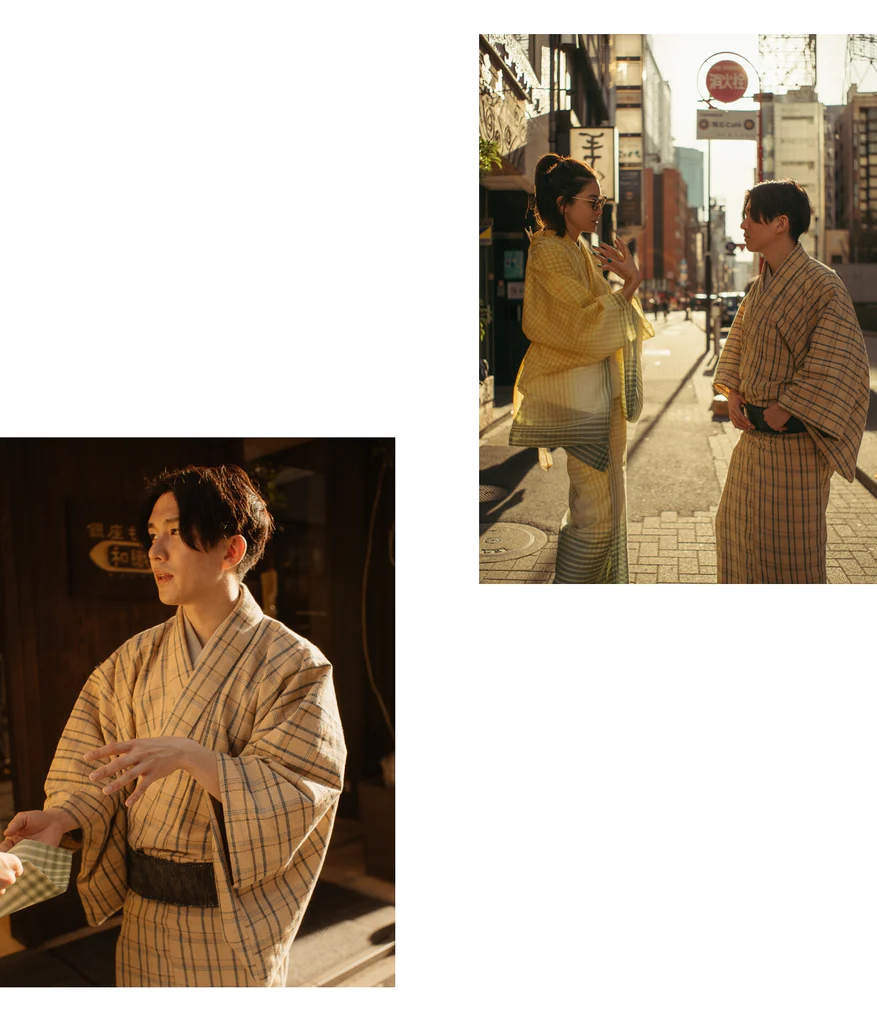
I strongly feel the importance of reviving things that are about to disappear like Soetsu Yanagi and creating new value. tefutefu also wants to propose ways of wellbeing that return to sustainability and closed production loops.
I want to foster the ethos that good, well-made things have value. In order to connect that value to the future, we will finally start a business to buy back what we sell from August. Kimono is said to be inherited by three generations, but many people are leaving kimono due to nuclear families and the influence of COVID-19, and so it is becoming less common for families to inherit kimono. Therefore, I strongly feel the need for Ginza Motoji to become a hub and to pass on the legacy and culture of kimono.
Apparently, the kimono I wore today was designed by a Living National Treasure?
It was created by Junki Tsuchiya, a Living National Treasure who expresses the world of gauze that weaves in intricate patterns. It's a summer kimono, but the sheerness and light gradation seen through the weave is exceptional. If you take a closer look, you can see that the vertical and horizontal weaves in the textile are three-dimensional. The craftsmanship of those who have mastered such a high level of make should be handed down to three generations like art. That's why we want to create a system that can smoothly pass on these skillsets to the next generation without losing the value of what we sell.
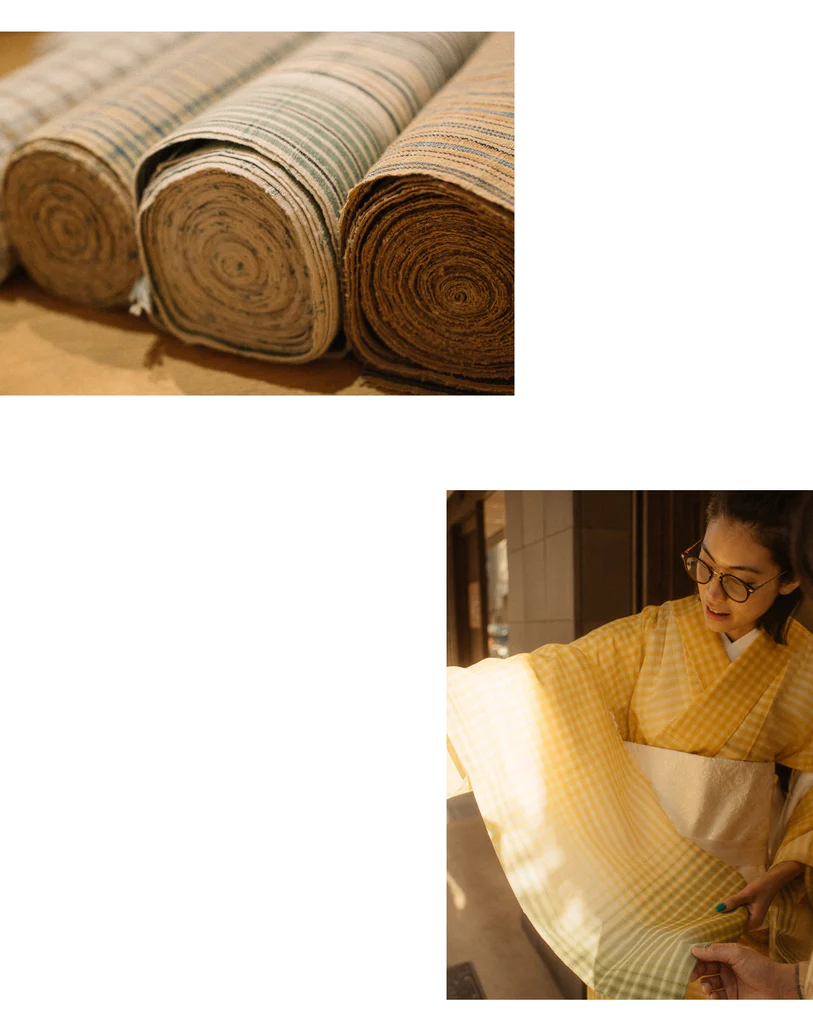
In November 2010, you held an exhibition that goes beyond the art of dyeing and weaving.
We have started the HIRAKI project, which explores the possibilities of dyeing and weaving by re-examining tradition from a new perspective and allowing organic results to form. The first exhibition we held is titled “Winter - FUYU” and is a collaboration between vegetable dye artist Hiroki Yamazaki and Okurayama Studio, a creative studio-quarry located in southern Miyagi Prefecture.
Okurayama Studio is a studio that produces furniture and art by mining Date Kanmuri stone, which has a unique texture that attracted the likes of Isamu Noguchi. Mr. Takasuke Yamada, the 5th generation owner, sees the entire mountain as a space for his creation, and by arranging his works in various places, he is also engaged in activities to evoke the culture related to the landscape itself. We both had experience studying abroad in London, so we hit it off and started working on this project two years ago. Inviting Mr. Hiroki Yamazaki, whose great-grandfather is Mr. Akira Yamazaki, who trademarked the term “plant dyeing” in 1971.
In addition, kimonos, obis, and large cloths were dyed, embellished with stones, and introduced through activity including dance. Iwadaichi is the starting point for generations of dyeing artists who have worked with natural colors by hand. Mount Okura, which has sunk into the sea twice in its 20-million-year history, in encounter with Mr. Yamazaki, a researcher of vegetable dyes that is rooted to the earth, the earth shaped and warped by the passage of time, results in an endless dialogue in flux. It inspired and expanded the possibilities of new dyeing and weaving. I hope that these activities will serve as a platform to connect traditional crafts and kimono culture to the younger generation.
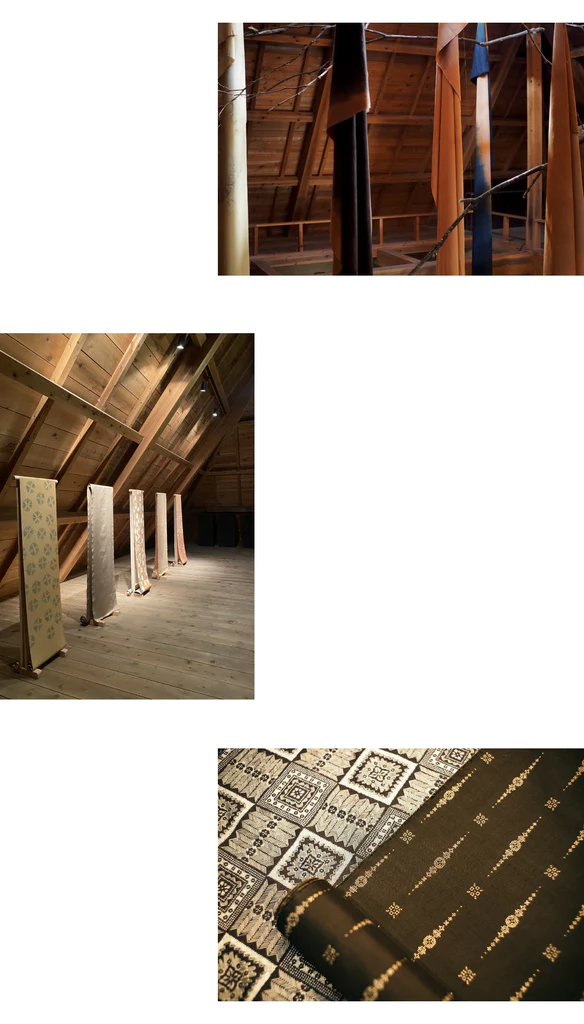
Is it possible that traditional crafts are stuck in going the opposite direction in order to protect "tradition"?
It is possible. For example, Oshima Tsumugi, which is produced in Amami Oshima, adopted a technique called Shimebata around 1907. At that time, the practice was more flexible, and that year was a turning point, and the technology developed greatly. Over time, the newly introduced things become the standard, and eventually it becomes tradition. In that process, new foundations form, so I feel that innovations to the craft are always necessary. Therefore, as the second part of the HIRAKI project, we are also working to propose new dyes for craftsmen in Oshima. In the Amami Oshima mud dyeing process, the tannin pigments of the plant-dyed Sharinbai and the iron contained in the Amami Oshima mud chemically react with each other. In order to further explore the potential of this mud dyeing, I used four types of vegetable dyes rather than the wheel plum that’s more typical, and combined it with Amami mud. That is the new cloth developed with Mr. Kanai Kogei and Mr. Shinya Yanagi. By experimenting this way, the traditional pattern that incorporates the technique of the machine has a completely different look. We hope that our proposals to craftsmen will lead to new industry trends.
Ginza Motoji
WEB: https://www.motoji.co.jp
Instagram:@ginza_motoji
Photography: Teddy Wilkins, Eri Kawamura
Interview: Hikari Mori
Coordination & Text: Yuka Sone Sato
Design: Mammy Horie
Translation: Kelly Yeunh





